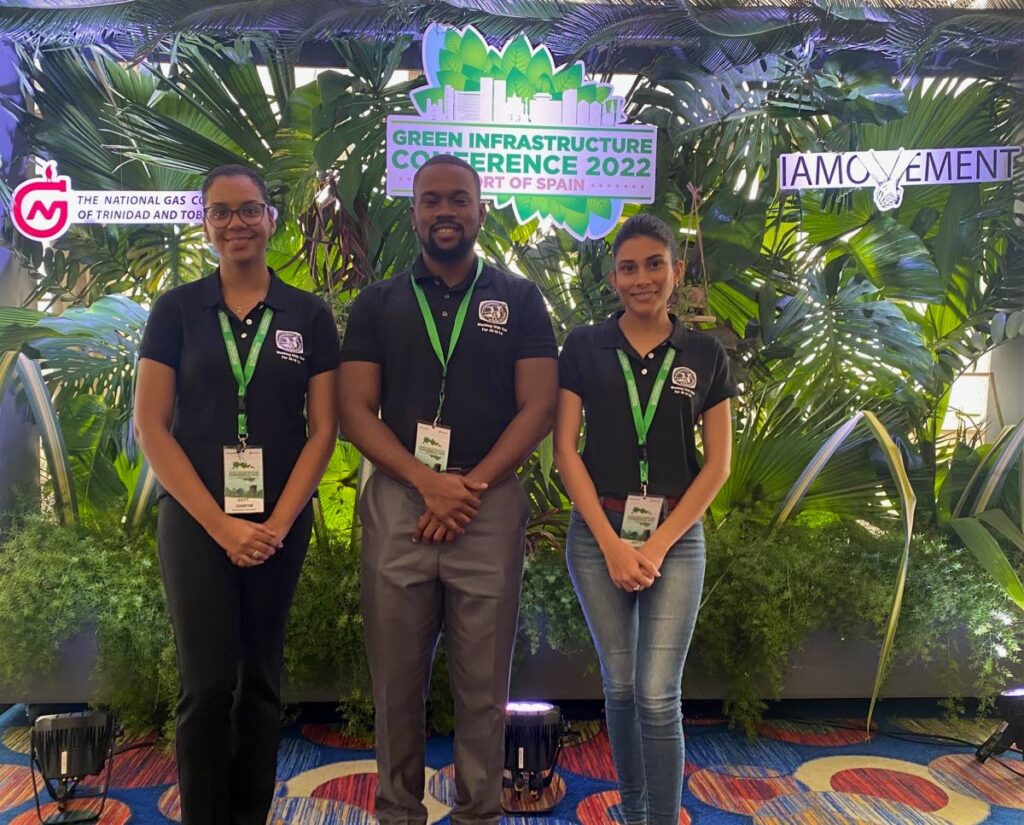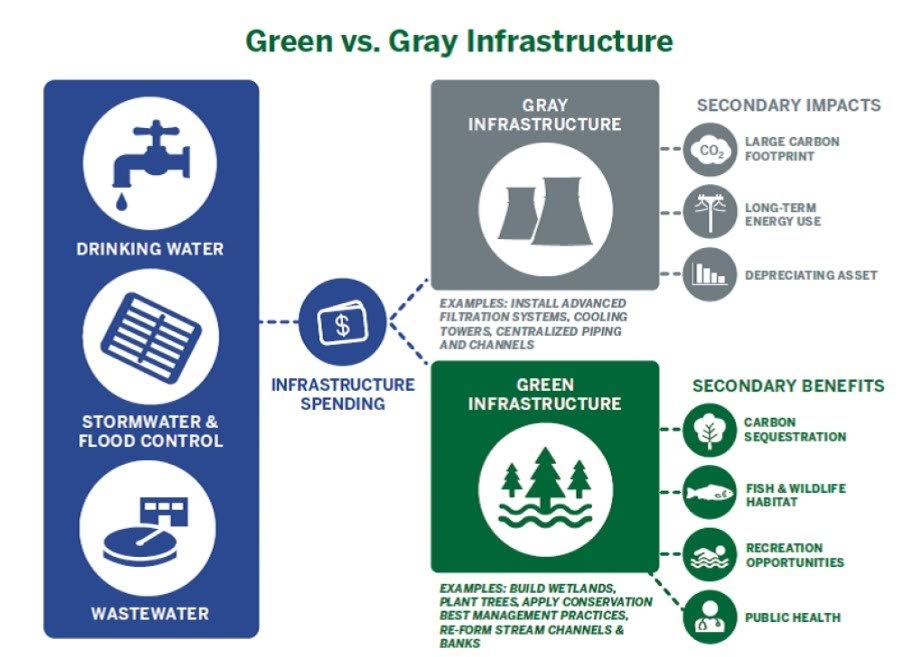Lessons from green infrastructure conference

GEOLOGICAL SOCIETY
The IAMovement partnered with the NGC to host the inaugural Caribbean Green Infrastructure Conference (CGIC 2022) on October 25-26. This joint venture placed emphasis on advocating for green infrastructural solutions and the importance of green financing for this enterprise, specifically, the implementation of the vetiver system as a vessel for mitigating the impacts of climate change.
Green infrastructure can be defined as systems installed in communities or cities that utilise landscaping, plants and soils to store, infiltrate or evapo-transpire stormwater and reduce flows to sewer systems or surface waterways. It seeks to solve urban and climate challenges by “building with nature.”
The Geological Society of Trinidad and Tobago (GSTT) was proud to offer support for the conference as a community partner.
Vetiver is a grass that has a deep root system that can extend to ten feet within two years. It is hardy, fire-tolerant and non-invasive, with five-seven times the tensile strength of most grasses. It is being used in TT as a bio-engineering tool to solve land- and water-related challenges.
While the IAMovement’s advocation for educating on and adopting green infrastructural technology seeks the best interest of our country where climate resilience is concerned, government and shareholder participation can elevate the outcome of such initiatives. Several government officials were invited to share their role, as the decision-makers of this country, in the initiatives of green discussions and practices put forward by the hosts.
In attendance on the first day of the conference was the Minister of Planning and Development, Pennelope Beckles. She spoke of her ministry’s recognition of the vetiver system (VS) as a means of carbon sequestration as well as “a low-cost solution to adaptation in areas of erosion.” The minister also outlined the VS benefits to local communities, such as being an outlet for rural development and livelihood generation.
Another government representative present was the permanent secretary of the Ministry of Works and Transport, Sonia Francis-Yearwood, who briefly highlighted the ecological challenges facing TT as a small island developing state (Sids). She reiterated the ministry’s promise to do its part to minimise the impacts of its ongoing and future projects on the environment. She also emphasised the need for efficient use of natural resources, further stating the benefits of the vetiver grass itself in the creation of geotextiles and groundwater recharge of the water sources via green infrastructural technologies.
On the second day of the conference, Port of Spain deputy mayor Hillan Morean shared his enthusiasm for the initiatives proposed for the capital with those present. With the city council making its application to the Green Fund, priority lies on monitoring tree health and the upkeep of parks and squares throughout the capital city, with equal importance being placed on recycling, education, and awareness.

(Source: thefreshwatertrust.org) -
Although the organisations responsible for the CGIC 2022 are locally based, the panel discussions highlighted opportunities for expansion of the green initiatives in the wider Caribbean and Latin America. Despite the region’s low contribution to greenhouse gas emissions, there exists high vulnerability to the impacts of climate change, especially as Sids.
Notably, regional networking endeavours can drive collective climate action in keeping with the ideals proposed at the conference via ecosystem-based adaptations (EbAs), blue-green infrastructural approaches, and strategies such as mangrove and coral restoration.
The panellists mentioned, however, that the focus should not only be on facilitating the shift from present extractive economies to a more sustainable approach, but also incorporating regenerative practices.
Ian McNeel, director and founder of the Walker Institute for Regenerative Research Education and Design in Barbados, gave a detailed overview of the Walker Reserve being a model of climate resilience with accomplishments in the watershed and degraded-land regeneration.
In addition to further recommendations for green infrastructure, community and regional development through stakeholder engagement for Sids, and the implementation of innovative methods for the utilisation of that green infrastructure without further exploitation of resources or degradation of the environment, is crucial to its expansion.
One speaker urged people not to be “blinded by the light” with regard to grey infrastructural development (human-engineered infrastructure that manages water resources, eg, water treatment plants, dams, seawalls) but to be mindful of the benefits of our natural environments.
A key factor in the success of the implementation of green infrastructural technologies is funding. In recent times, financial institutions and other stakeholders have had a keen interest in initiatives for sustainability and climate resilience, leading to a significant increase in investments. Green financing broadens the horizon for exploration and experimentation, funding research and development, and projects that benefit poor and vulnerable populations, while stimulating sustainable growth.
Representatives from institutions such as Republic Bank, the Inter-American Development Bank and the European Union spoke from a donor’s perspective, maintaining focus on renewable-energy initiatives and reducing carbon footprint.
With climate change affecting both land and marine environments, institutions have implemented finance mechanisms for each of these: blue bonds for marine projects and blue-economy development, and green bonds for climate action and environmental development.
Financers are aware, however, that companies sometimes engage in “green-washing,” where they misuse environmentally-friendly jargon, imagery or otherwise, which can subsequently deceive investors who seek to finance upstanding initiatives. They are aware of the risks involved in funding green initiatives.
However, they believe the budding opportunities and benefits of supporting such projects outweigh the risks, recognising the importance of financing the expansion of green initiatives in hopes of sparking environmental equity.
The GSTT, as a community partner, served to offer support to the IAMovement and the NGC at the CGIC 2022, by promoting education and awareness. We are committed to working closely with these organisations in achieving the goal of combatting climate change.
On the second day of the conference, secondary-school students (as members of their respective schools’ environmental and geography clubs) accompanied by their teachers, visited the GSTT’s display booth and were eager to discover how they can contribute to environmental preservation.
Unsurprisingly, and in line with TT’s current state of affairs, they were most concerned with the effects of flooding.
The IAMovement currently has a local initiative in a place called the Vetiver Education and Empowerment Project, which introduces the VS to communities where there is a clear benefit for climate action and increased soil integrity.
Moreover, green infrastructure is mutualistic to the management of geoscience processes. An example is the role of rock formations in the filtration and movement of water to the aquifers, which, when coupled with the VS, can increase the absorption and infiltration of rainfall, reduce surface runoff, and mitigate against flooding.


Comments
"Lessons from green infrastructure conference"